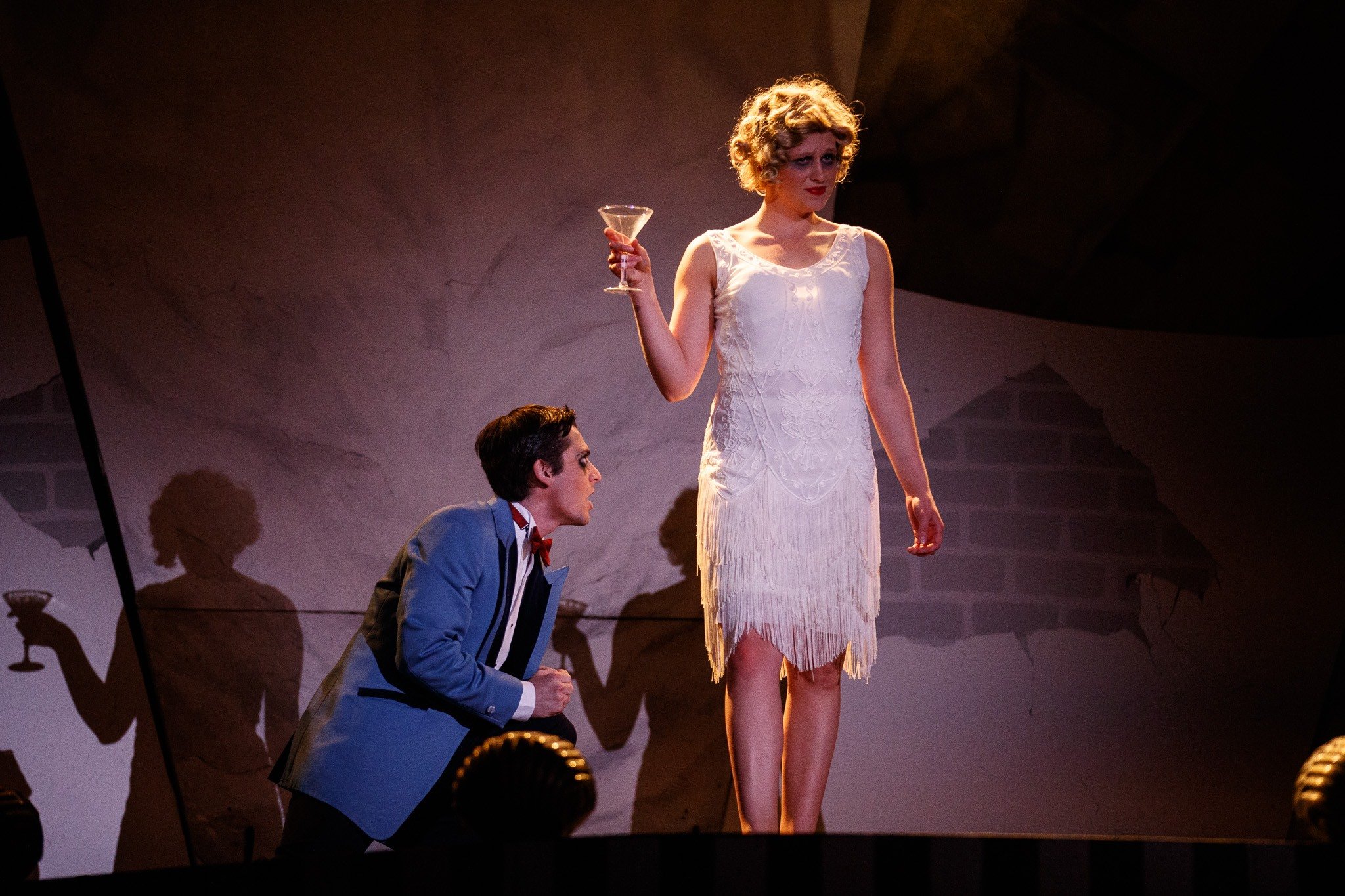Reeling in last year’s success with the rock musical, “Rent,” Ram’s Head Theatrical Society took on yet another difficult and risqué production: “The Wild Party.” This year, exchanging rock ballads for ragtime show tunes, Ram’s Head proved once again the versatility of Stanford’s premier performers and technicians. Set in the concrete jungle of New York City, “The Wild Party” follows two vindictive lovers, dancer Queenie and vaudeville clown Burrs, as they throw a party that is grander and, well, frankly, wilder than anyone could imagine. As they open the bottles of bubbly, tensions rise to the surface, culminating in a life-or-death situation. While some, like Kate (Nicole Hardson-Hurley ‘17), are concerned with being “The Life of the Party,” others are just concerned with making it out alive.
“The Wild Party” is an extremely challenging show to undertake, not only because of its controversial subject matter — relationship violence, sexual abuse and murder — but also because of the somewhat distant and unrelatable 1920s setting. However, these elements, handled delicately and expertly by cast and crew as well as by director Nathan Large (‘18), make this show the wild success that it is.
Choosing to confront, rather than censor, difficult scenes involving rape or violence, Ram’s Head casts a spotlight on the darkest facets of the human experience. These are unpleasant truths, of course, but the emotional honesty, supplied by the actors (namely Brooke Hale ‘20, who plays the abused lover Queenie), transform this time-specific 1920s tale into a timeless narrative about the uncomfortable animalistic instincts which are buried within all “civilized” human beings.
Perhaps the most graphic scene involves the two main characters, Queenie and Burrs (James Seifert ‘17), as he yells obscenities, yanks her hair and forces her onto the bed. The entire exchange happens so quickly, so unexpectedly, so unseemingly provoked that it is hard, as an audience member, to grapple with what has transpired. Hale’s helpless expression, wide eyes, struggling fits of movement and eventually, even more chilling, her still submission as Seifert forces himself on her, is haunting. Hale’s rendition of “Out of the Blues” following the violent incident is equally haunting, as her raspy, powerful voice turns quiet and utterly rejected. She wanders about the stage, looking out into the audience and off to the side, as if looking for answers she cannot provide for herself, unable to reconcile with the abusive act. In this striking scene, Hale’s vulnerable and sympathetic portrayal coupled with Seifert’s contorted expressions of anger capture the rather blunt struggle between order and chaos prevalent throughout the show.
Hale sways and sashays across the stage with her Marilyn-esque short blonde hair and bold smile. Whether smoking a cigarette or dangling a glass of champagne, Hale retains her character’s sexuality, which is continually her source of power over both the men and women of the show. In emphasizing her sensuality, she captures the attention of one Mr. Black (Peter Kurzner ‘17). Kurzner’s interactions with Hale starkly contrast with those between her and Seifert. Seifert twists Hale’s arm, while Kurzner merely wishes to hold her hand. In “I’ll Be Here,” Kurzner inches toward Hale and softens his voice to a chilling vibrato. Hale evades his advances, but as the song concludes, he wraps her in a coat and she gives him a soft, loving kiss.
Seifert, on the other hand, is nothing short of brutish. He throws Kate to the ground and eyes Queenie with an intense and possessive stare. Even as he lays his hands on Hale’s shoulders, a seemingly loving gesture, his grip is rigid and controlling. In “Let me Drown,” he further emphasizes his character’s aggressiveness through strong belts and violent stomps across the ground. However, as he asks himself, “What is it about her?” — in reference to how she drives him crazy — Seifert displays the agony within this macho man. He cries out and widens his eyes, clearly unable to understand his own actions. Moments of clarity and active questioning, such as this, cast Burrs as a character to be pitied. He is unable to control nor understand himself, as shown clearly at the end of the show as he, unhinged, points a gun at Queenie and Black.
Burrs’s animalistic instincts call attention to unspeakable yet shared truths of humanity. These truths are exemplified metaphorically, through both Burrs and the ensemble, with a symbolic makeup design, which features all ensemble members, including Seifert himself, adorned with zombie-like clown eye circles. This uniformity in makeup design, as well the cast’s synchronized turns, kicks and lifts, add a sense of unity amidst the chaos — a unity formed through base human acts of greed and excess. In a surprising addition to the show, Seifert even wears a clown nose before scenes of violence or outbreak to emphasize basic human folly.
In the world of “The Wild Party,” order turns to chaos. In today’s world, the story is not so different. Bombings, abuses of power, genocide — these are all aspects included in a “civilized” society. “The Wild Party” acknowledges these unforgiving truths of humanity not for audiences to adopt a pessimistic world view, but rather, to ask themselves, as Queenie does in her final song, “How Did We Come to This?” There is something hopeful about this question. If we can recognize our propensity, our natural inclination for wrongdoing and self-deception, perhaps we can ameliorate our situation.
With powerful harmonies and a message that truly resonates with contemporary audiences, Ram’s Head undoubtedly succeeds in celebrating theater and humanity’s capacity to overcome and reevaluate hardships.
Contact Alli Cruz at allicruz ‘at’ stanford.edu.
